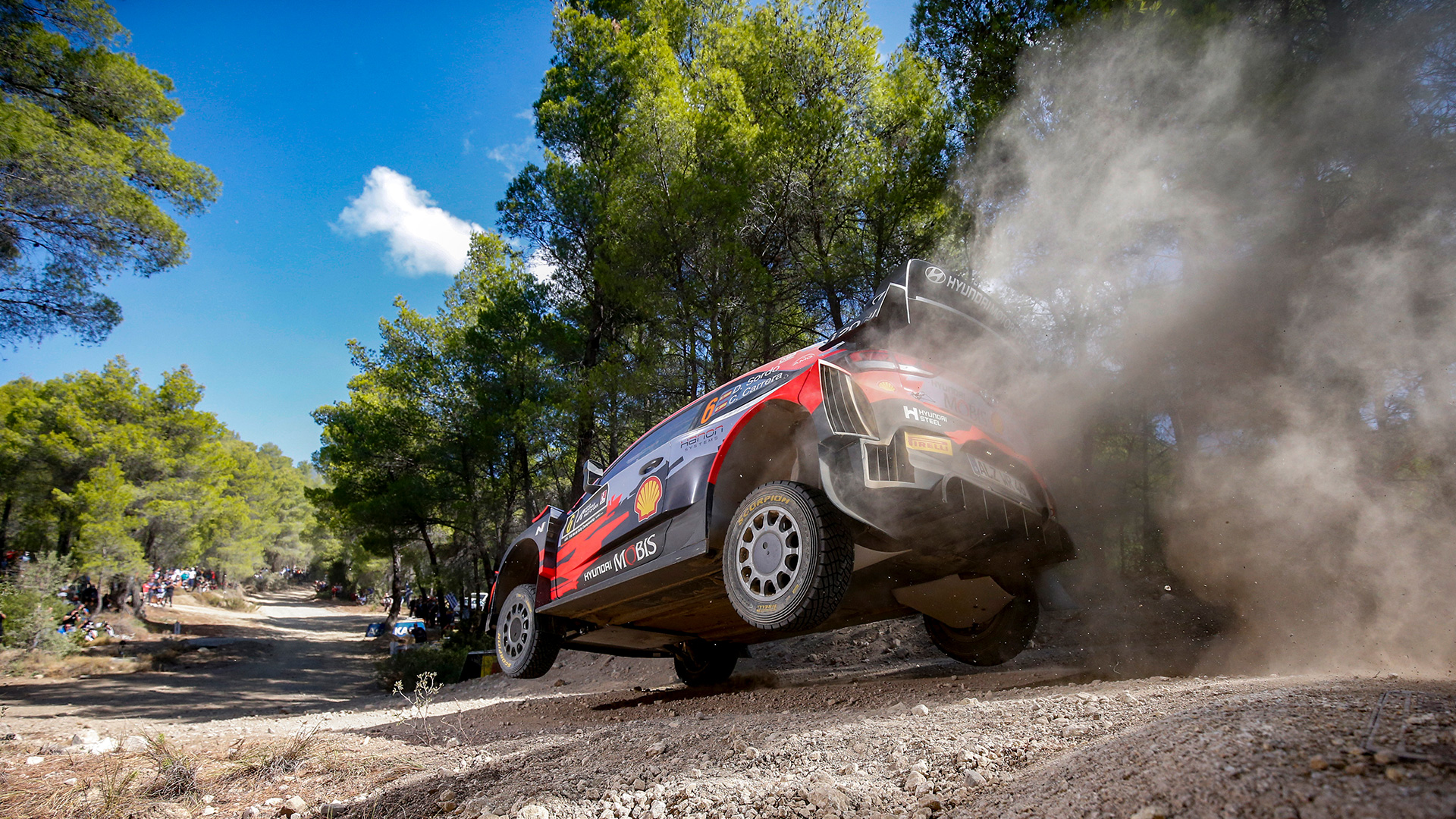
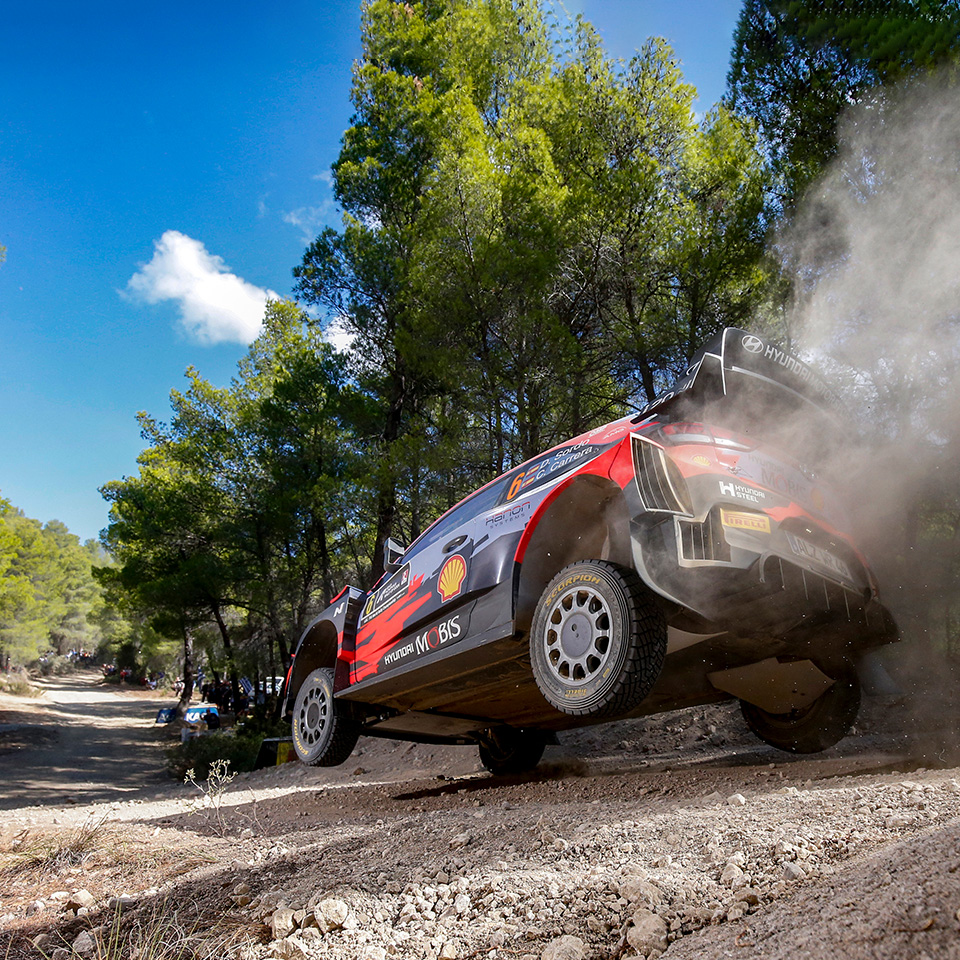


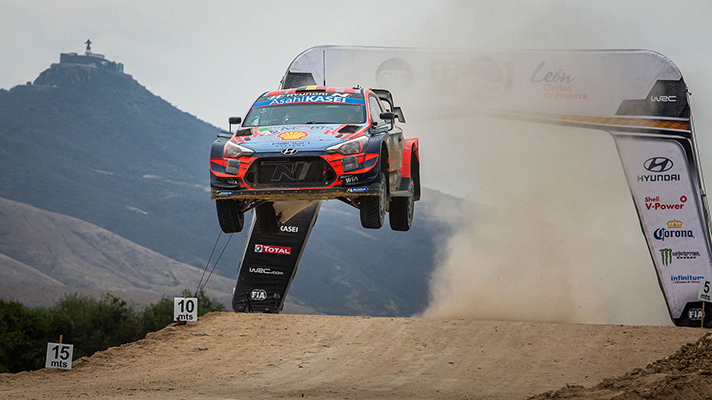
A cute little car can jump over as wide as three basketball courts! In the World Rally Championship (WRC), this is not impossible. As is well known, the WRC is a series of racing cars that compete for speed and durability on the roads of the world by revamping the most common small car in Europe. The charm of WRC is that small cars, which are recommended cars for people in their twenties, can run really, really fast.
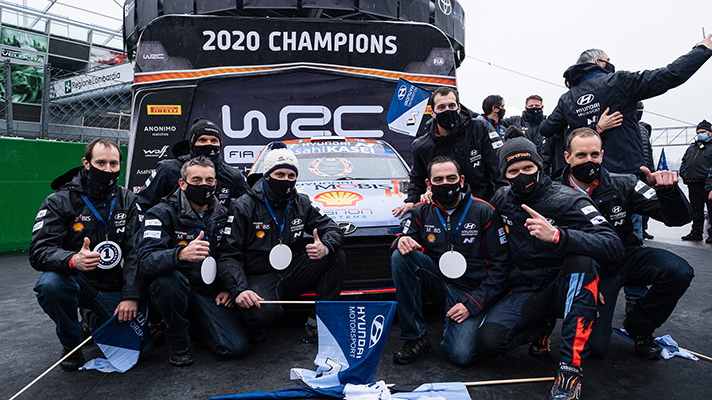
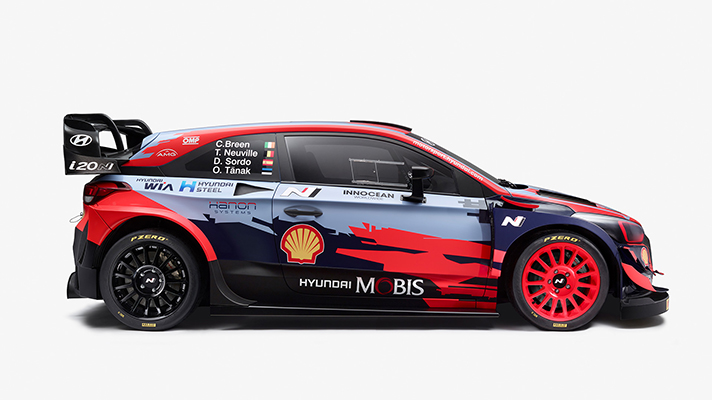
Hyundai Motor Company participated in this fierce battlefield with the compact hatchback i20 and has already won the manufacturer's overall championship twice. The i20 is Hyundai Motor's European market-targeting model, which emerged as a successor of Click, and competes with 'B-segment' models such as Volkswagen Polo, Renault Clio, and Skoda Pavia. In Europe, there are a lot of 4m B-segment compact cars that boast excellent practicality. They compete for sales volume in the automotive market, and speed in WRC. Hyundai i20, Toyota Yaris, Ford Fiesta, Citroen C3, and Skoda Pavia are examples of these cars.
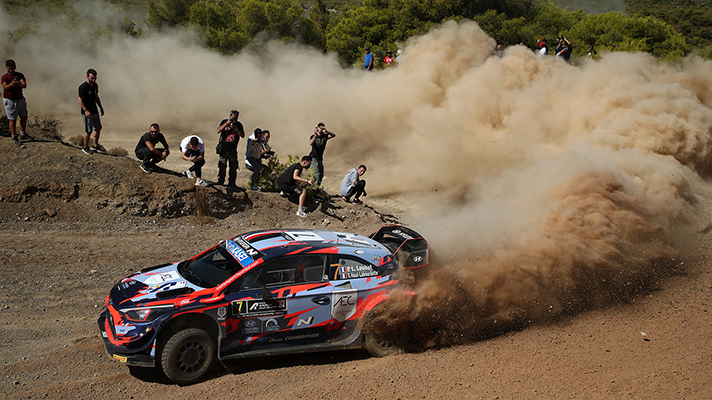
WRC is usually played by best-selling small cars. But that doesn't mean that you can drive your small car on the off-road road without watching the broadcast - First of all, the driving skills of a professional driver are different from yours. Although rally cars and mass-produced cars shared the same womb, when you look at the details, there is a huge difference.
First of all, the rally car i20 WRC is a four-wheel drive, unlike the mass-produced i20. it has a mechanical differential on the front and rear, and an electronic differential in the center for optimized distribution of the torque on all four wheels. The chassis is also thoroughly reinforced compared to that of a mass-produced car, so it can withstand not only extreme driving but also catastrophic accidents. For instance, the i20 WRC of the Hyundai Motorsport GmbH suffered a major accident when it rolled down a slope during a test drive in Germany back in 2014. However, after just one overnight repair, the Hyundai team won their first trophy - it wouldn't have been possible without a sturdy chassis.
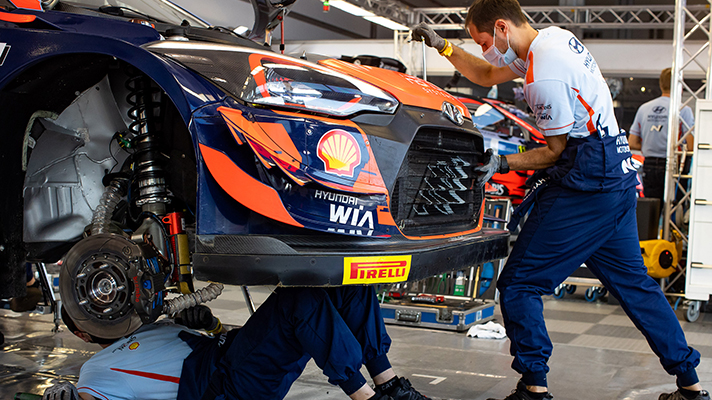
WRC's 1.6L turbo engine currently boasts 380 hp. Equipped with huge wings and sturdy dampers, it can jump over the length of three basketball courts. In 2010, former WRC champion Sebastien Loeb performed a staggering 85m jump at Rally Turkey SS20 Balika; although it is not his official record, it is marked as the longest jump in WRC history. The big jumps of rally cars, such as the snow rally of Sweden's Colin Crest and Sardinia's Mickey's Jump in Italy, are something that can draw large crowds.
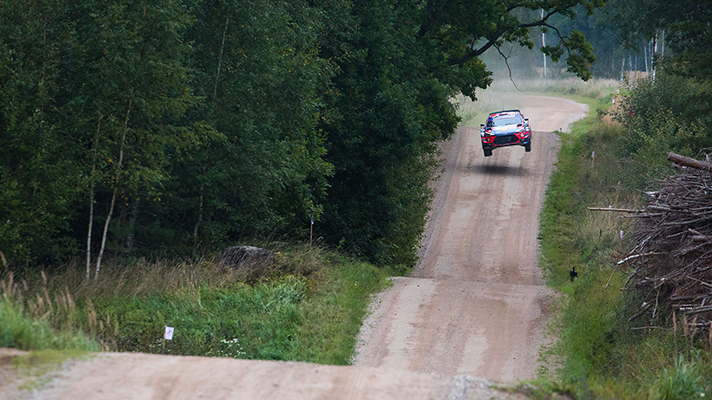
In fact, there is no acceleration when the car is in the air, and there is no guarantee that a long jump will necessarily lead to a good record; it would provide an unforgettable pleasure to the viewers, though. Also, as there are curved stages where the rally cars have to keep jumping like in Finland and Estonia, jumping is essential for WRC. Jumping on a circuit means damage or an accident; but in a rally, it is an important factor in the victory. Therefore, a rally car requires high stability in the air and excellent landing ability.
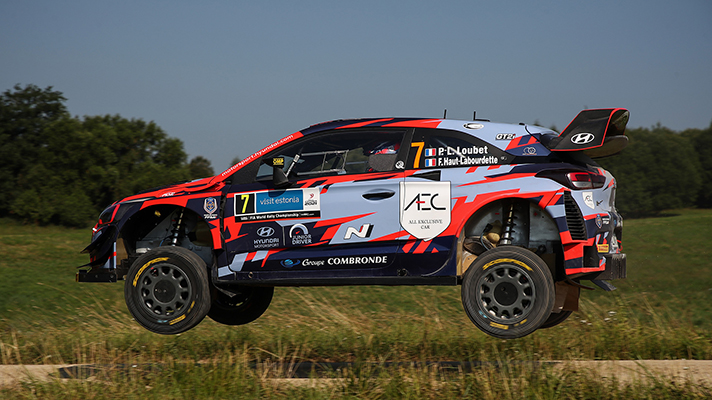
Of course, flying a 1.2-ton steel block into the air and landing it safely is no easy task. First of all, if a car lacks aerodynamic balance, the jump is highly likely to lead to a major accident. The damper is also made much thicker and stronger than the mass-produced car to absorb the enormous shock when landing. In addition, various parts such as compression and rebound speed are finely adjusted to respond to various circumstances. To cool the damper oil that would reach up to 120°C, the damper of the rally car is equipped with additional oil storage space and cooling technology.
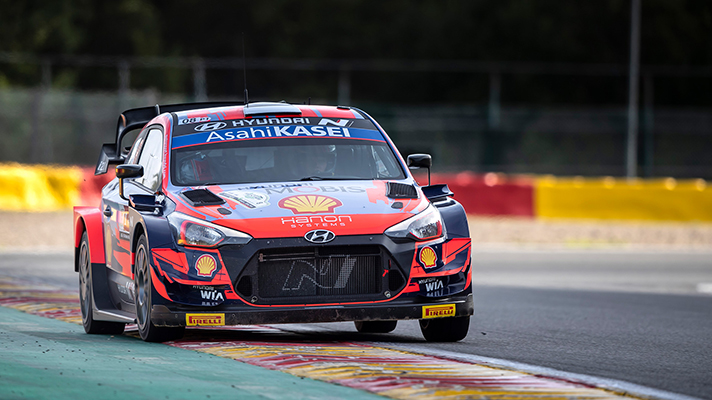
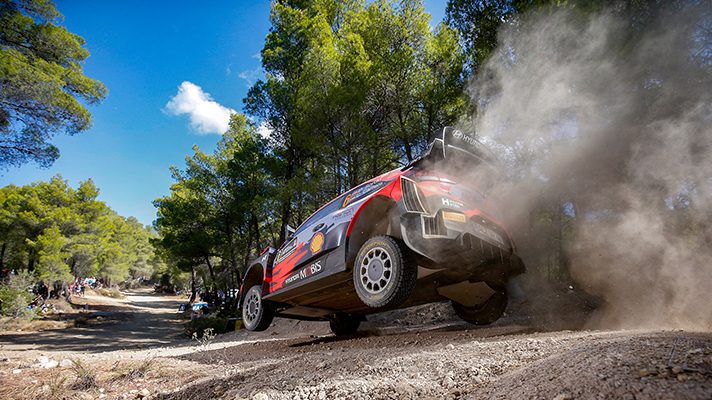
The battlefields where the rally takes place are very colorful. For the Tarmac Rally, which runs on a flat paved road, the rally cars need to lower the minimum ground clearance like a circuit racing car to lower the center of gravity and increase the cornering speed by setting the damper firmly. On the other hand, in gravel rallies on unpaved roads, the teams increase the minimum ground clearance and make dampers soft to effectively absorb shocks and protect the body. Though it might seem like the same gravel courses, rough roads in Italy or Greece are fatal to the body of the car compared to those in Finland. Therefore, strong steel plates and carbon panels are used to protect oil pans, gearboxes, and fuel tanks. The damper gets longer on the gravel roads compared to the tarmac. Brake settings also vary depending on driving conditions. Tarmac courses with higher speed and higher tire grip require larger brake discs.
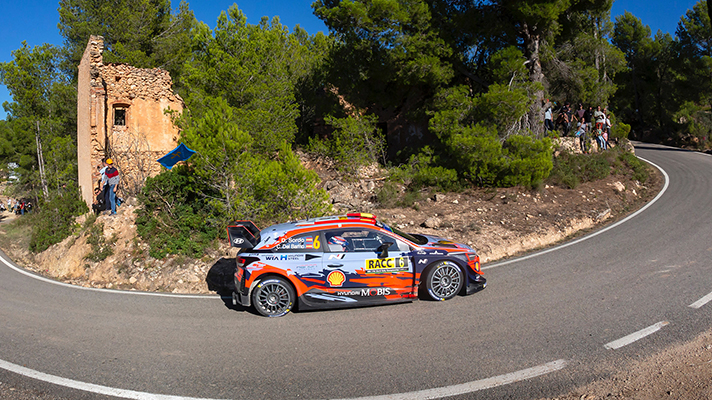
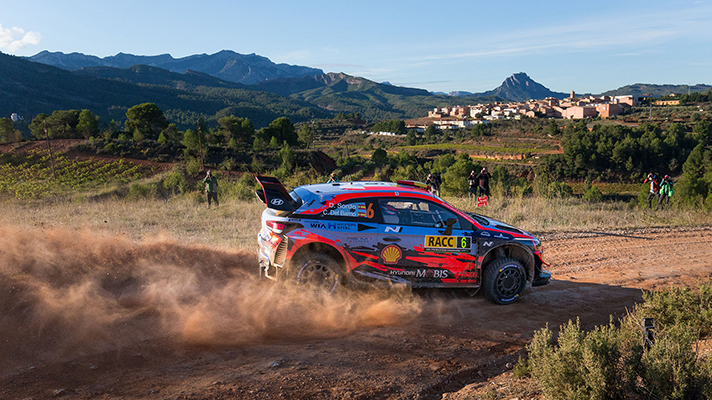
As such, the Tarmac and Gravel Rally each use their own dedicated suspension settings. However, there are also rallies that use both settings in one match. For example, in Rally Spain, the driving conditions change depending on the day of the week. Immediately after running on the dirt road on Friday, the setting is changed and the road runs on the paved road on Saturday and Sunday. Except for the chassis, engine, and transmission, the front and rear suspensions, subframes, differentials, driveshafts, and brakes have to be changed - in just 75 minutes. Rally Spain, which was canceled last year due to the pandemic crisis, will return to the 11th round this year. Unfortunately, there may be no mechanics replacing parts at lightning speed because there would be no gravel courses.
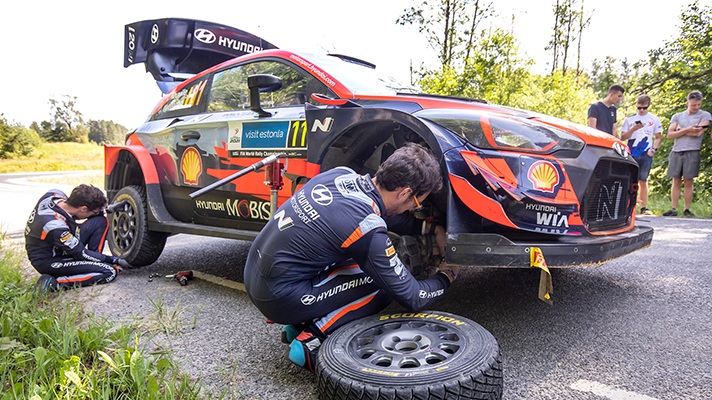
Tires are just as important as suspension settings in a rally car. A flat tire can greatly affect the race, so drivers and co-drivers get thorough training for tire replacement. They can change a tire just in one minute, but sometimes they just go if the finish line is close enough.
Rally tires are high-grip compounds that provide high traction even on dirt or gravel roads, and they are designed to withstand extreme driving. Of course, lifespan is shorter than that of regular tires. However, to protect the tires from high-speed cornering, landing impact, and sharp obstacles, the sidewalls are much stronger than those of mass-produced cars. For reference, teams use special tires for the snow rally in Sweden - studded tires with spikes surrounding them are suitable for snow and icy roads.
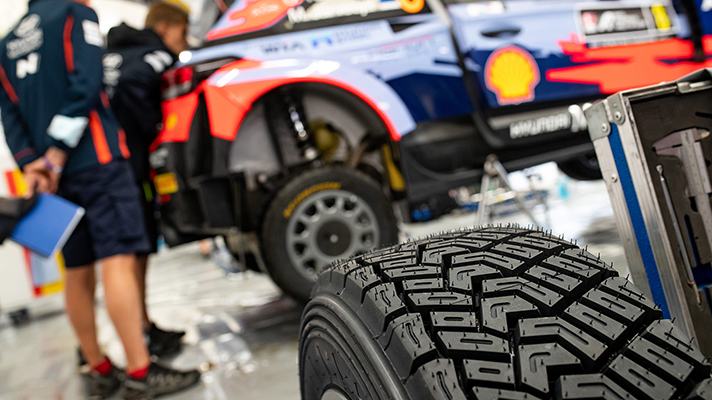
Currently, Pirelli exclusively supplies tires to WRC. Several products are offered depending on the characteristics of the rally, and the maximum number of tires that can be used for each rally is set. This year, Estonia allowed 24, and Greece, which has rough roads, allowed up to 32. Each team has a different strategy, such as how many soft and hard parts to use, how many spare tires to run, and so on. At this year's Rally Estonia, Tanak had a series of tire punctures on Friday and had no choice but to retire. However, if you run with two spares just to avoid that, your car will get too heavy; and that will be catastrophic for your record.
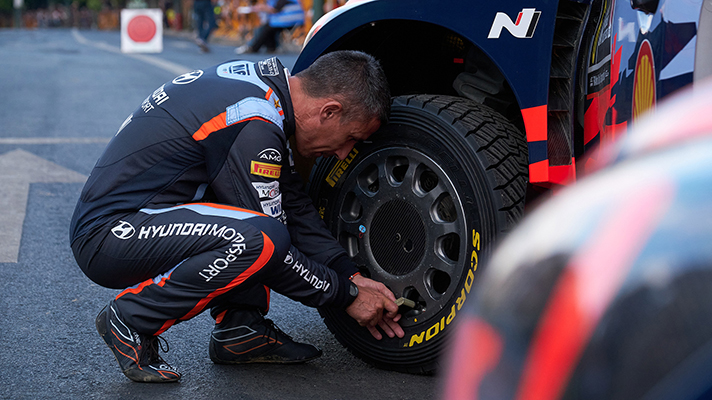
Drivers usually use the same tires for all four wheels; sometimes, however, they use different tires for one rally car. For example, they bring a soft tire for the spare even though the car is set for hard tires. If the road surface condition changes during the race or if you need to hurry up even more for the record, you can increase the cornering speed in one direction using the soft tire. Some drivers deliberately induce understeer or oversteer by putting different tires in the front and rear in Tarmac Rally.
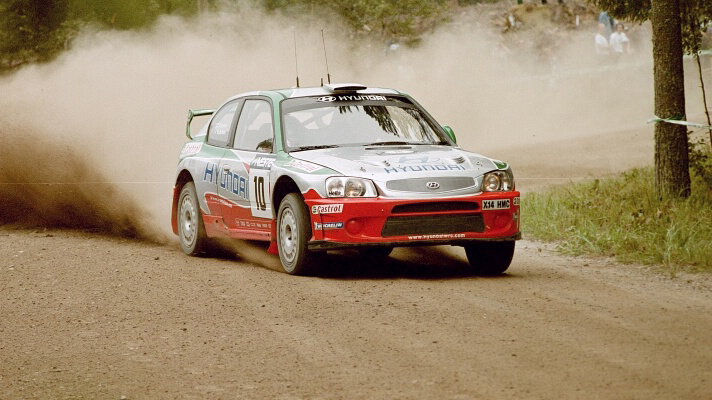
Technically, rally cars are remodeled mass-produced cars and they have changed their looks over time. Historically, the 1980s were the most dramatic. In 1982, the Federation Internationale de l'Automobile (FIA), the host of the WRC, introduced the Group B regulation, which allows homologation for the sales record of 200 cars. With the bar getting lowered, several automakers developed rally cars with great performance; Ford hired an F1 designer to build a midship 4WD supercar called the RS200, for instance. The Evolution model of the RS200 was capable of 580 horsepower in the WRC setting.
However, this high-power competition increased the risk - a series of major accidents, and Group B was finally shut down in 1986. The following Group A had stricter homologation requirements. Using the mass-produced cars that sold more than 25,000 units a year, an automaker had to create special units and sell 2,500 units of them to be able to use them in the rally. A suitable rally car is a four-wheel-drive compact car with a high-performance engine. However, the demand for such small, high-performance - and last but not least, expensive - cars, was highly limited.
Concerned about the decrease in participating manufacturers, the FIA introduced the World Rally Car Regulations (RC1) in 1997. If the car sold more than 2,500 units per year, it was allowed to be converted into a rally car with a four-wheel drive and a high-performance engine, and by changing the suspension layout. It was thanks to this regulation that Hyundai started participating in the WRC (2000-2003) with a front-wheel-drive accent (Verna).
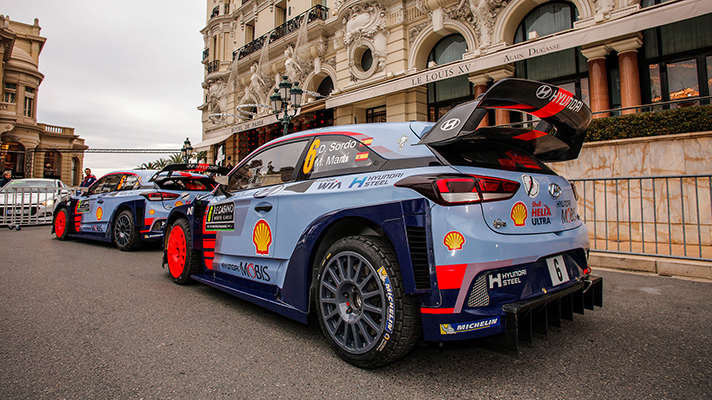
Since then, World Rally Car has undergone several changes. Among them, in 2017, new regulations were introduced for a more dynamic race. By loosening the intake limit, the output of the 1.6L turbo engine was increased from 310 hp to 380 hp, and the width was increased to 1,875 mm, hence greater freedom in aerodynamic design. Compared to the previous season, the outer look has changed significantly - the fender flares protruding from the left and right, air splitters on both sides of the bumper, and a larger rear wing. All this was set in 2017.
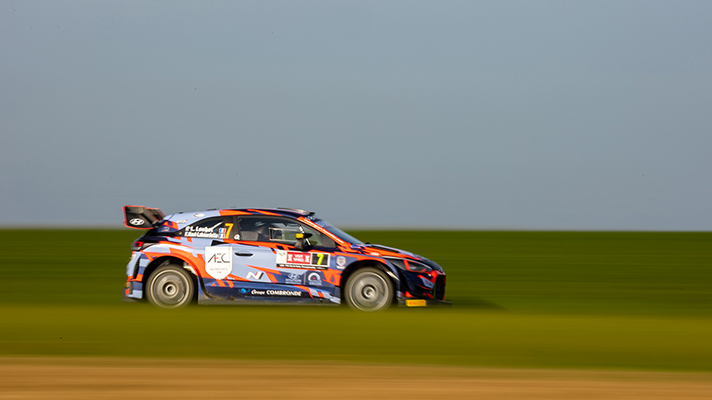
Even though we cannot see it, the place we live in is full of air. We barely feel it when moving slowly, but it is a huge barrier to fast-moving objects. In order for a car to run well, it is necessary to reduce air resistance and efficiently use the wind flow to create downforce - the force that pushes the car downward.
The aerodynamic design is as important for a rally car as it is for an F1 race car with huge wings. By making the car adhere to the road surface in any situation, the tire grip is improved so that you can run faster and maintain stability during jumping or drifting.
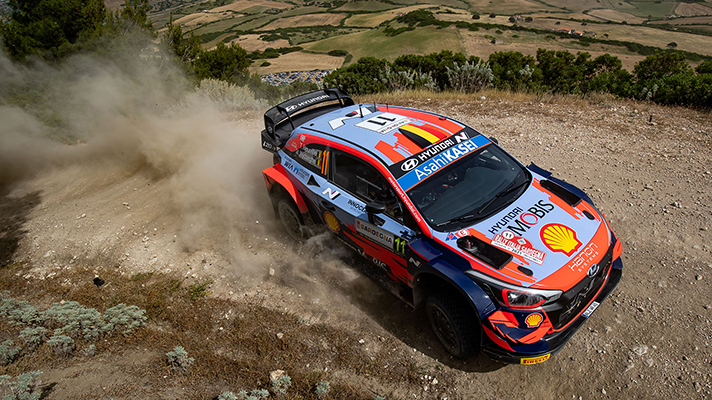
The difference of pressure between the air above and below the car causes a net upwards vertical force which increases when the car goes faster. It is easy to understand if you think of it as similar to the principle that an airplane wing gains lift. However, the problem with cars is that the necessary effect is opposite up and down. Therefore, the lift must be offset by creating downforce with various aerodynamic components. Without downforce, the rally car would quickly veer off the course and roll over a cliff.
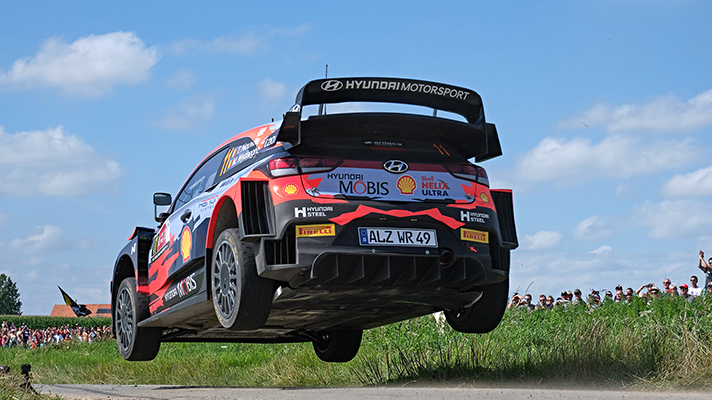
A number of aerodynamic components are also applied to the i20 WRC. Most notable is the huge carbon rear wing. Its role is to push the air that has passed over the roof upward. There are also small wings on either side of the front bumper and behind the over fenders. It is used to press the front part of the vehicle. A diffuser installed under the rear bumper spreads the air coming out from under the body over a large area, quickly inducing airflow between the body and the road surface. According to Bernoulli's principle, which we learned in physics class, as the velocity of a fluid increases, the pressure decreases. When the flow velocity under the body increases, the atmospheric pressure decreases, and the downforce is naturally generated by the pressure difference from the atmospheric pressure above the body. You can run stably and quickly only when this invisible airflow well controlled.
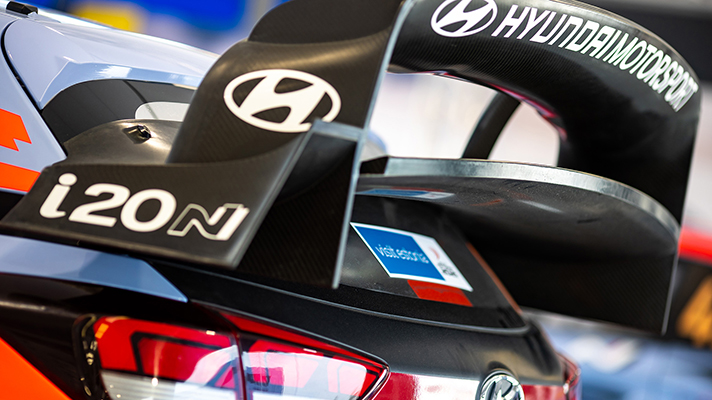
Ahead of the season, the new rally cars are tested in extreme security. The wing developed on computer simulation (CFD) runs the course directly and verifies performance, driving feel, and stability. In this case, the mobile truck is not marked and sometimes a fake test car is put in to create confusion. Of course, updates will continue during the season. Last year, the Hyundai team showed off a new aerodynamic design in Monte Carlo in the opening game, and then changed the rear wing in Mexico just two months later. Fierce fights do not discriminate on or off the stage.
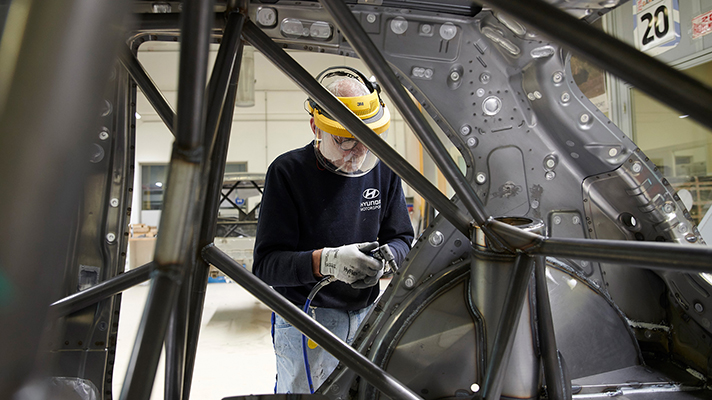
Rally cars are basically mass-produced cars, but when you get to know them, they are actually completely different. In the World Rally Car, the only parts imported from mass-produced cars are the monocoque chassis and lamps. The chassis also undergoes many modifications - adding steel plates and roll cages, and increasing welding points. i20 WRC even uses a newly carved engine block based on the theta engine blueprint; so, it's almost like a new engine.
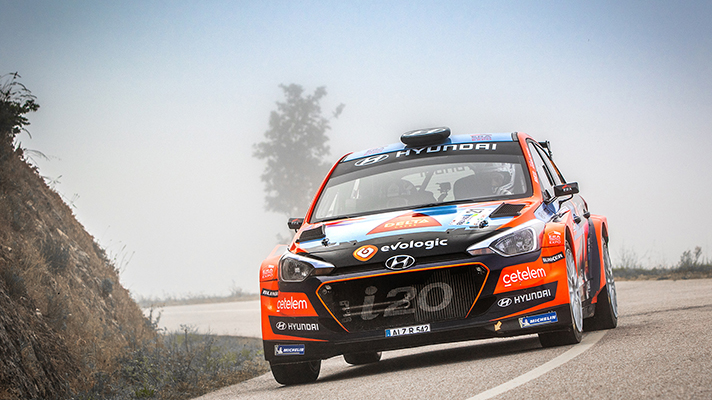
Compared to this, the i20 R5, which is a modified version of the actual mass-produced engine, looks a little closer to the mass-produced i20. The i20 R5 used in WRC2 and WRC3, which are subclasses of the World Rally Car, is basically a rally car for sale. It is developed and produced by Hyundai Motorsport and supplied to many rally teams around the world. However, even the i20 R5 hardly uses mass-produced car parts except for the chassis, engine, and lamps.
For reference, the R5 rule will be revised to Rally 2 from next year. Therefore, the Hyundai team started using the new i20 N Rally 2 model from Belgium Rally. The team's goal is to get ahead of the Rally 2 competition starting next year, after dealing with a few issues found in the actual test.
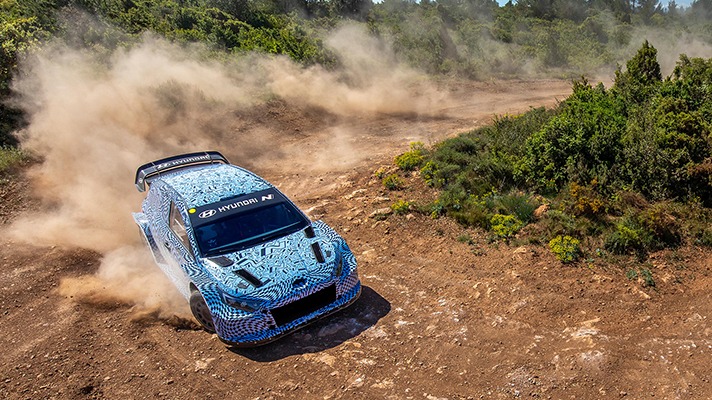
From next year, the WRC is about to undergo another major change. It is the first WRC to introduce a hybrid drivetrain through the Rally 1 regulation that replaces the World Rally Car. It continues to use the current engine while adding an e-motor package that includes the motor, battery, and controller. The 100kW (131 horsepower) e-motor not only provides additional power during the race but also reduces emissions in the movement section where you have to move with other cars on public roads. The standardized e-motor package is supplied by German CompactDynamics.
WRC's introduction of eco-friendly technology is good news for the automakers as well. However, as with F1 and Le Mans, the development cost could skyrocket to develop hybrid race cars. So all participating teams use the same e-motor system and control software. In response to this, Hyundai, Toyota, and M-Sport Ford, which are participating in the current WRC, promised to go for Rally 1 for the next three years. The Hyundai team is currently developing a new Rally 1 car based on the facelifted i20 N. Toyota will use the GR Yaris, and the M-Sport Ford will use Puma instead of the current Fiesta.
Rally 1 car is made by covering a steel pipe frame on a composite body. Since it is not necessary to use the chassis of a mass-produced car, the exterior can be freely modified. It means that even the models that had not been available due to the size of the body can be made into a rally car. This is thrilling news for everyone, not to mention from the marketing perspective.
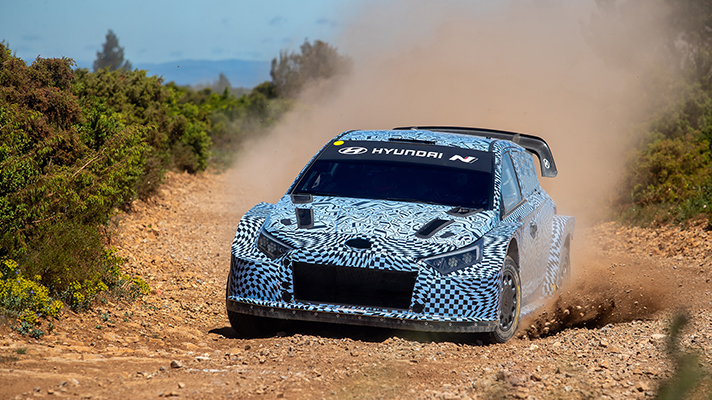
The hybrid system is directly connected to the propeller shaft instead of the center differential, and it works by pressing a button like F1. It will never be easy to use in a rally where the driver is so busy steering the wheel; you can't have the luxury of having enough time to press a button on a long straight course. In addition, when moving on public roads and near service parks, it must be operated only by electricity. If the battery is completely exhausted during a stage, it could be impossible to move on to the next stage (the detailed regulations are not yet to be announced).
The 2022 season still remains unclear, but at least it would be safe to say that it has finally begun. The WRC Rally 1 will be quieter and cleaner than before, but the competition will be fiercer. Many are expecting to see what Hyundai Motorsport would achieve. The team has played a significant role in the history of WRC through its constant challenges; and this time, they will be ready for Rally 1.
By Sujin Lee, automobile critic
Excited about the 1991 establishment of the first domestic auto mania magazine 〈Car Vision〉, I sent a series of long letters there that led to an unexpected hire. 27 years have passed since then, the years of plowing through the writing struggles of an auto journalist. After becoming an editor for 〈Car Vision〉, I came to my current position as the Editor-in-Chief for 〈Car Life〉. My recent interests include cutting-edge techs like electric cars, connected cars, and autonomous driving, but the ‘otaku’ in me doesn’t want internal combustion engines to disappear either.